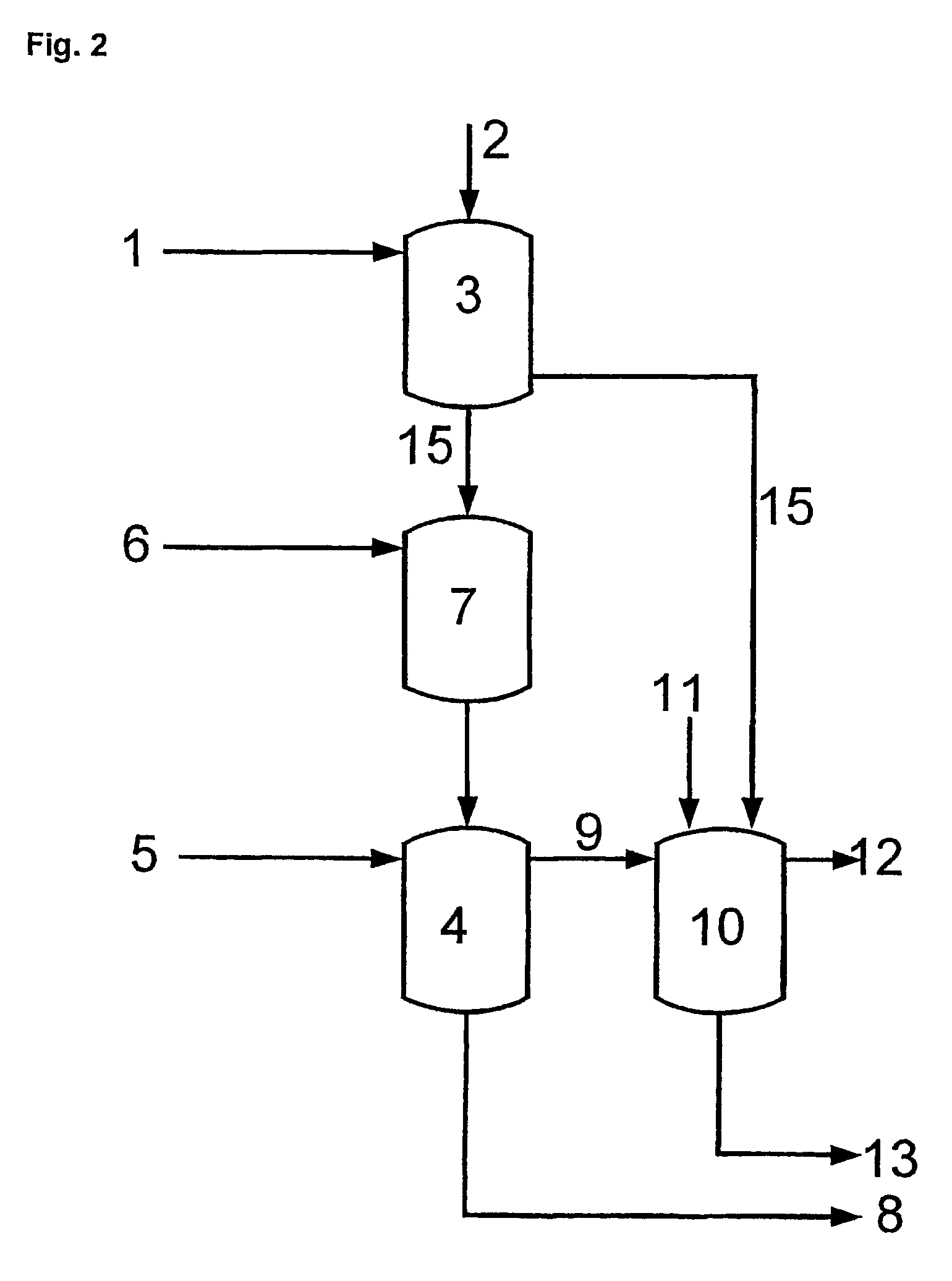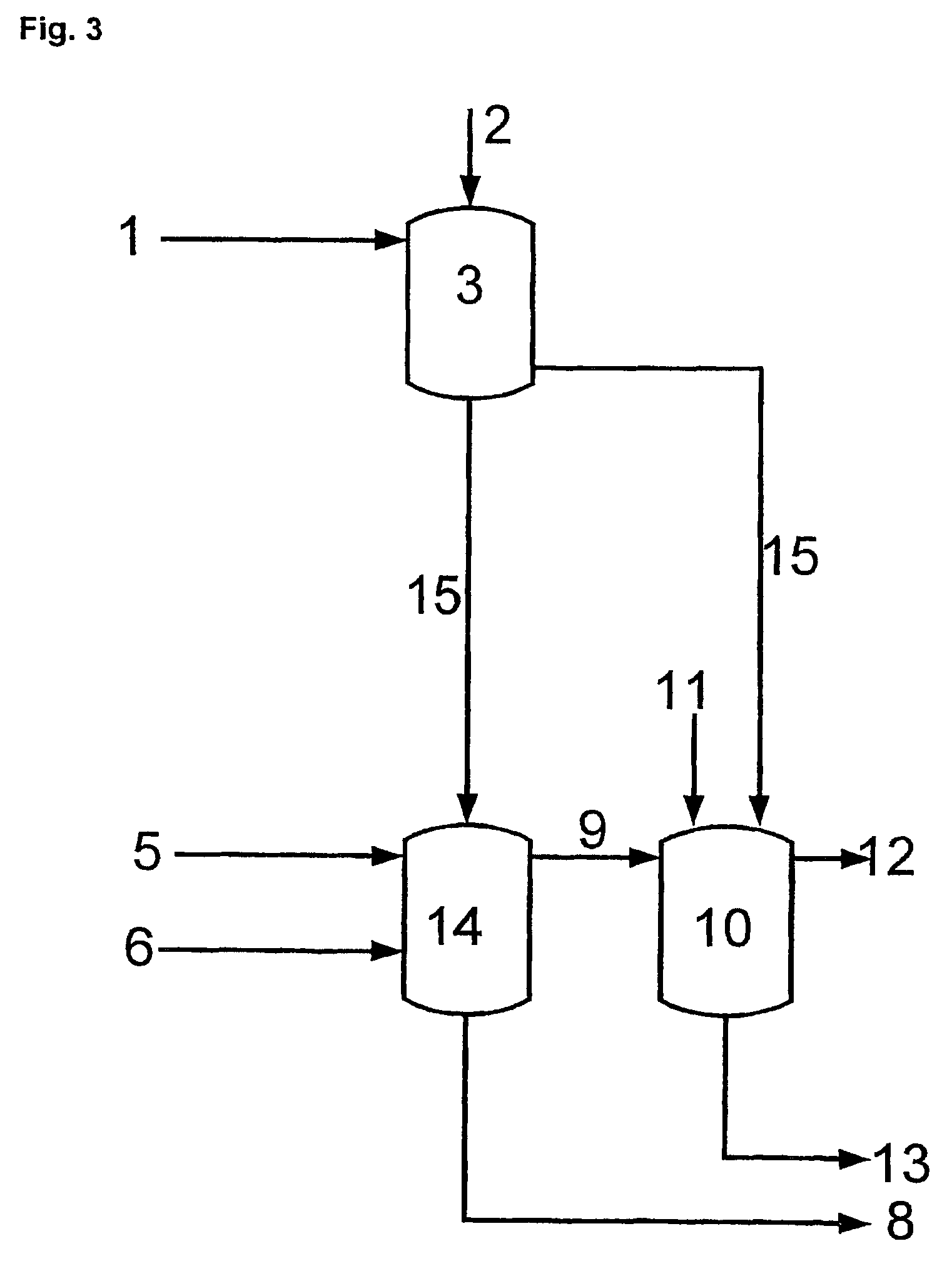Brine separation in tall soap oil preparation
a technology of bicarbonate brine and soap oil, which is applied in the field of brine separation in tall soap oil preparation, can solve the problems of increasing the amount of sulphuric acid in the acidulation of crude tall oil, increasing the difficulty of obtaining a high degree of bicarbonate brine from the soap oil, and increasing the difficulty of achieving a high degree of bicarbonate brine separation, etc., to achieve the effect of reducing the achievable ph, limiting the solub
- Summary
- Abstract
- Description
- Claims
- Application Information
AI Technical Summary
Benefits of technology
Problems solved by technology
Method used
Image
Examples
Embodiment Construction
[0031]As schematically shown in FIG. 1, water 1 and recovery boiler ash 2 are introduced into a dissolving tank 3. In an embodiment, the recovery boiler ash is a mixture of about 90% sodium sulphate, 9% sodium carbonate and 1% sodium chloride, and is separated from the recovery boiler flue gases by using electrostatic precipitators. In the dissolving tank 3 a water solution 15 is prepared which has an increased density of 1200 kg / m3 achieved by dissolving ash and dust 2 from the recovery boiler into the water 1.
[0032]The high density water solution 15 is fed to a vessel 4. Further carbon dioxide gas 5 is introduced into the vessel 4 and dissolved in the high density water solution 15. The so prepared high density carbonic acid solution is pumped to the tall oil plant. In the tall oil plant crude tall oil soap 6 is neutralized with the high density water solution in a neutralization reactor 7.
[0033]After this carbon dioxide pre-treatment process, two phases are formed within the neut...
PUM
| Property | Measurement | Unit |
|---|---|---|
| density | aaaaa | aaaaa |
| density | aaaaa | aaaaa |
| density | aaaaa | aaaaa |
Abstract
Description
Claims
Application Information
 Login to View More
Login to View More - R&D
- Intellectual Property
- Life Sciences
- Materials
- Tech Scout
- Unparalleled Data Quality
- Higher Quality Content
- 60% Fewer Hallucinations
Browse by: Latest US Patents, China's latest patents, Technical Efficacy Thesaurus, Application Domain, Technology Topic, Popular Technical Reports.
© 2025 PatSnap. All rights reserved.Legal|Privacy policy|Modern Slavery Act Transparency Statement|Sitemap|About US| Contact US: help@patsnap.com



